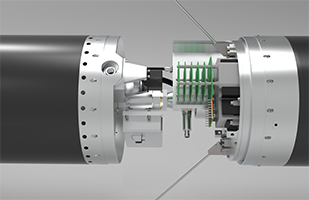Delft Aerospace Rocket Engineering
Shooting for Space
Introduction
Delft Aerospace Rocket Engineering (DARE) is a student rocketry society, currently aiming to be the first student team that launches to space.
To reach our goal, we are making Stratos IV.
This will be a hybrid rocket that stands more than 8 meters tall. Stratos IV will be launched in the summer of 2020.
The History of Stratos
Project Stratos has quite an impressive history.
The first rocket, Stratos I, was launched in 2009 from the Kiruna launch base in Sweden reaching an altitude of 12.5 km and thus set the European Amateur Altitude Record.
A few years later, in 2015, we broke our own altitude record by launching Stratos II+ to 21.5 km.
After the launch of the Stratos II+ our altitude record was surpassed by the German HyEnd team from Stuttgart, who launched their rocket to 32 km.
Set to regain our lead in the European Amateur space race we launched last summer, setting out to reach an altitude of roughly 70 km.
Unfortunately, the flight was not successful, and the rocket broke up 20 seconds into the flight at an altitude of roughly 9 km.
Learning from the Past
We have learned a lot during our long road to space.
Especially the investigation into Stratos III’s in-flight anomaly gave us new insights into rocket stability and the possible need for active control.
Taking all the experience from previous teams and combining it into one new project, we started the Stratos IV project, aiming to reach space at an altitude of 100 km!
Vital for a safe flight to space are the 21 PCB’s on board that run, control and monitor every part of the Stratos IV rocket.
These PCB’s can be found all throughout the vehicle, with the majority being housed in the nosecone.
Other PCB’s can be found in the engine bay and the roll control section.
The roll control section is a brand-new addition to the rocket and was added to prevent Stratos IV from spinning excessively about its own axis.
Preventing this spinning motion ensures that Stratos IV will not be dynamically unstable and fail in a comparable manner as Stratos III.
The roll control board reads out three redundant gyroscopes to determine its roll rate.
Based on this input, a valve is opened to allow nitrous oxide from the rocket’s main tank to flow to two of the four small rocket thrusters.
This causes the thrusters to fire rotating the rocket in a clockwise or counterclockwise direction and thereby countering its spinning motion.
As the roll control is a new system onboard our rocket, we first designed a development board.
Thanks to Eurocircuits
Using the fast prototyping at Eurocircuits we received the board in less than a week, this allows us to develop new systems quickly and do fast iterations.
The Next Step
We are now using this development board to test the software, while we are in the meanwhile routing the flight version of this PCB.














